Barabkunda, Chattogram: Where fire rests on water and legends don’t sleep

By the time we reached the base of the Barabkunda Hill, we were already three gulps into exhaustion: one for the heat, one for the humidity, and one for the grand mystery that awaited us uphill. It was just the three of us: Inti bhaiya, technically "on vacation" but somehow tagging along with a running commentary; me, with a drone in hand and slightly regretting the decision to wear full sleeves; and Tanzil, our cinematographer, whose camera had already started fogging up from the sheer effort of existing.
We rented a car from Chattogram City earlier that morning, weaving our way past the fading cityscape into greener territory. The road took us as far as it could, ending just shy of Barabkunda's sacred temple trail. Beyond that point, it was on us, and our legs.
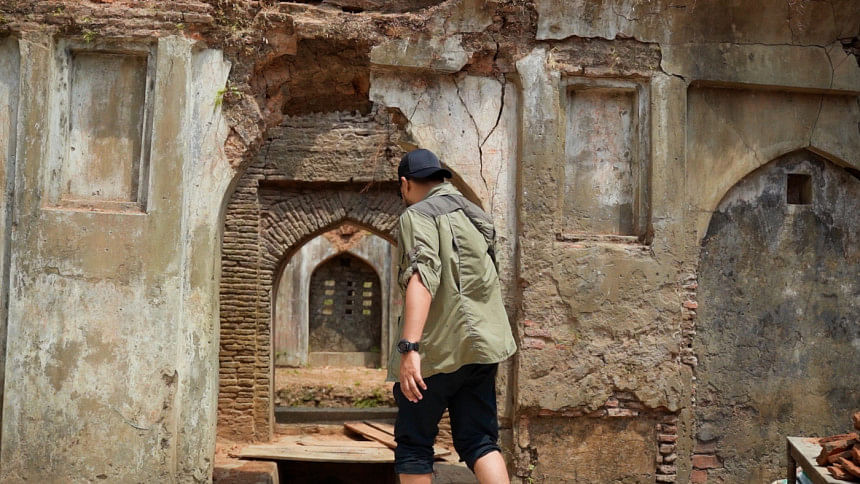
Now, we didn't quite anticipate the full impact of Chattogram's signature midday sun hitting full throttle. Caps were urgently bought from a nearby bazaar. Inti bhaiya, somehow untouched by work stress, took this as his cue to declare me a full-time TikTokker specialising in "heatwave skincare routines" and proceeded to roast us just to keep his mind off the scorching sun.
But with sunblock melting off and slippers beginning to question their life choices, we hiked our way up past small forest clearings, past the trail of a waterfall that could have come straight out of a Bangladeshi folk tale, and finally, into the heart of the temple grounds where an ancient flame burns in perpetuity quietly on water.
Yes, you read that right — fire, on water. And it has not gone out in centuries!
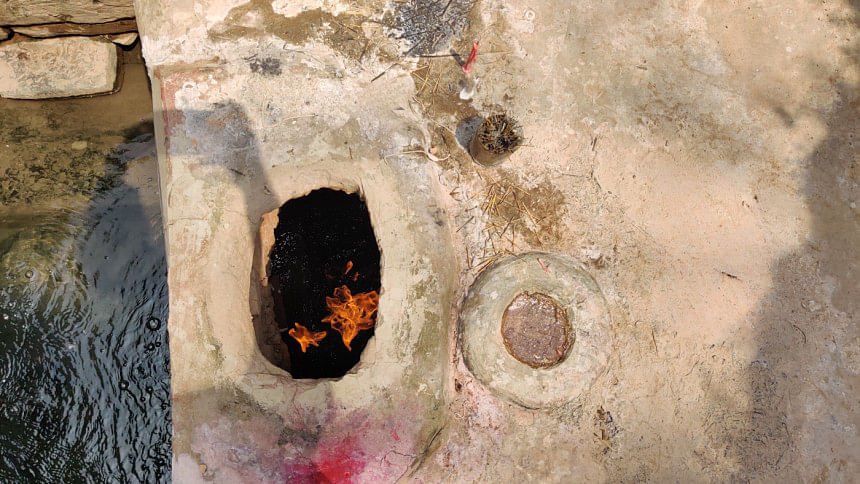
The Agnikunda: Sitakunda's unburnt offering
Tucked inside a modest, weathered temple structure lies the Barabkunda Agnikunda, a sacred flame burning on a shallow well of water. It doesn't flicker like a gas stove nor roar like a bonfire. It just…burns.
The locals believe it's divine. And honestly, when you see it up close — that yellow-orange flame floating on clear water while devotees whisper their wishes around it — it's hard not to feel like you have walked into a page from myth.
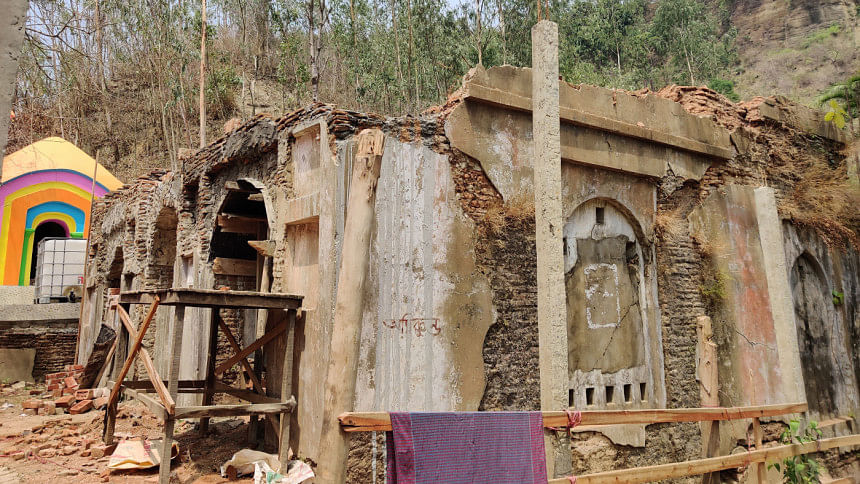
Some say the flame marks where the right arm of Sati, Shiva's consort, fell, turning the place into a Shakti Peetha, a site of cosmic power. Others tie it to Sita, from the Ramayana, saying this is where her famous Agni Pariksha took place. In either version, what's certain is that the fire has become more than just a geological oddity — it's a living, breathing part of the area's soul.
And while we are talking facts — yes, there is a scientific explanation. According to geologists, the flame feeds on natural methane gas that seeps from deep underground. It bubbles up through the water and ignites when in contact with air. Think of it like a naturally occurring pilot light, minus the plumbing.
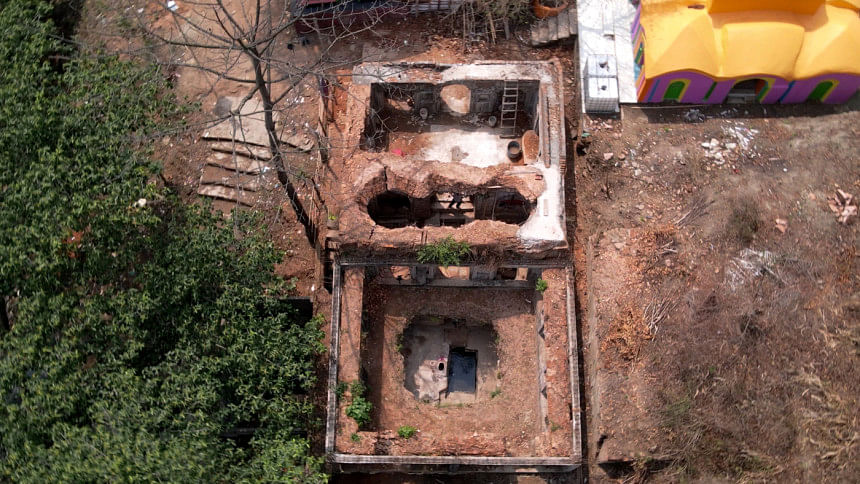
However, to reduce it to science alone would be missing the point. As we stood there, watching barefoot worshippers offer flowers and take blessings from the flame's water (which remains surprisingly cool), there was a strange calm in the air.

A place woven in quiet spectacle
The temple complex itself is humble. No grand marble staircases or golden domes. Just old brick, slightly tilted shrines, and trees that have probably witnessed more prayers than any scripture ever recorded. Alongside the main flame, you will find smaller temples, each with its own little story, its own caretakers, and its own whispers.
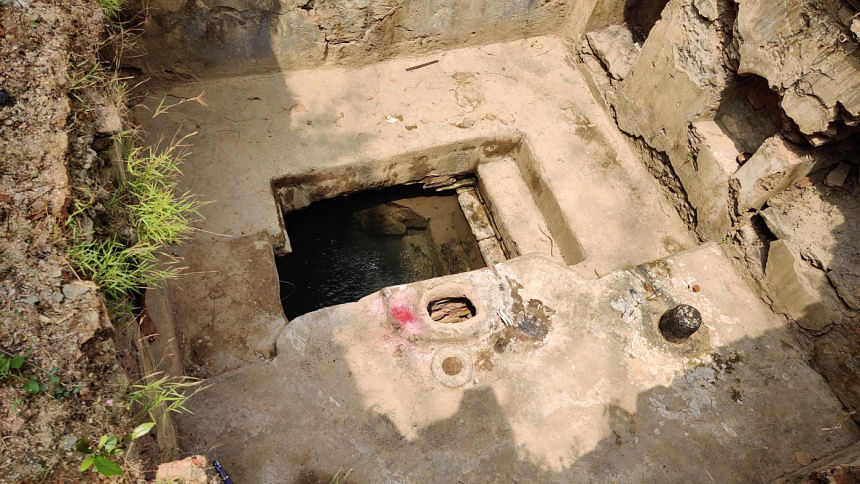
After a few minutes of scrolling through the history e-books, we came to know that the flame had never been extinguished, not even during heavy rainstorms or the cyclones that pass through this belt. Some believe it first ignited during the Great Arakan Earthquake of 1762, when tremors split open the Sitakunda Hills, releasing gas and perhaps sparking this eternal fire. It's not exactly a volcano, but during that earthquake, locals claimed the hills "erupted" with fire and mud. The flame may well be a quiet survivor of that chaos.
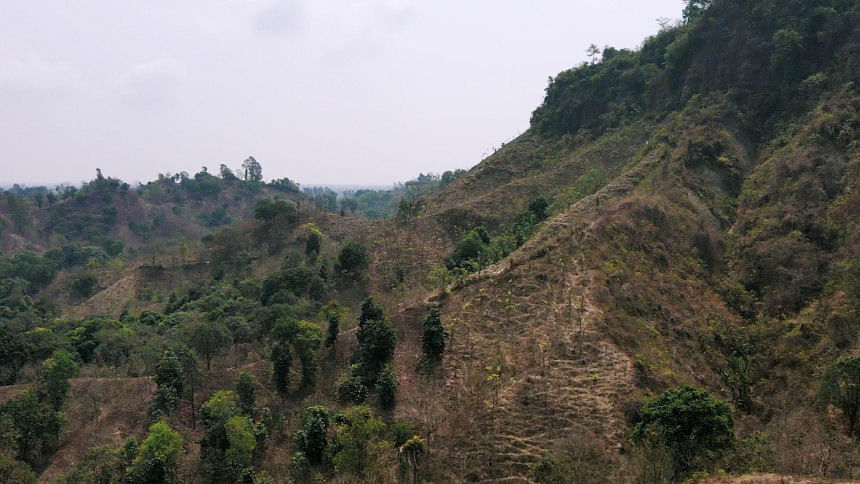
How to get there (without melting)
Getting to Barabkunda is fairly straightforward. From Chattogram City, it's a 1.5-hour drive up the Dhaka–Chattogram highway. The site falls under Sitakunda Upazila, and locals will happily point you toward the temple road once you reach the Barabkunda Bazar area. The last stretch is a bit of a hike, so do wear comfortable shoes (and maybe prep a sun hat if you are brave enough to go at noon like us).
It's not yet the kind of place with a ticket booth or parking guidance. It's still raw. And maybe that's what makes it special.
Parting thoughts
We left the Agnikunda a little sunburnt, a lot more curious, and somehow quieter. There's something disarming about seeing a contradiction — fire on water — so casually exist. No performance. No explanations. Just an ancient flame doing its thing while life flows around it.
And as we walked downhill, I declared, "I'm starting a podcast: 'Burning Questions at Burning Springs.'" We laughed, but no one said no.
Because honestly? It is a place that leaves you with questions. And maybe that's the best kind of travel experience — the kind that does not hand you all the answers, just opens the door to something old, mysterious, and quietly burning.

 For all latest news, follow The Daily Star's Google News channel.
For all latest news, follow The Daily Star's Google News channel. 


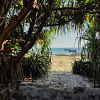





Comments